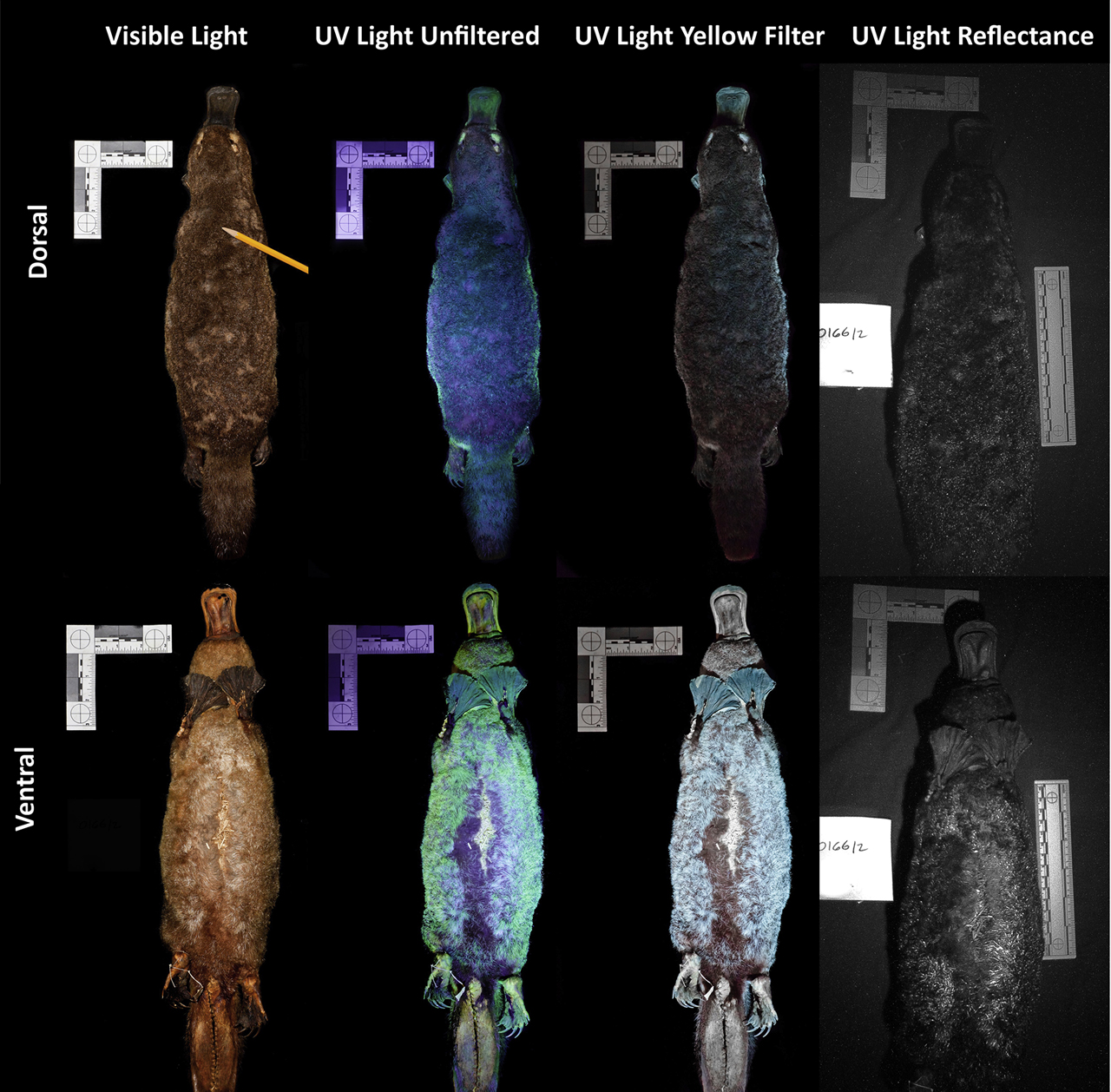The mysterious Platypus

Ripley’s explains how scientists once believed the platypus to be a hoax. (photo courtesy of Ripley’s)
December 14, 2020
The platypus is one of the world’s most beloved creatures. It’s cute, fluffy, and strange all in one. But, in my opinion, mystery is probably the platypus’s greatest attribute.
It was discovered that, under an ultraviolet light, the platypus actually emits a blue-green neon color on it’s pelts. This discovery came after the study of several specimens. Platypuses collected from Tasmania, Australia (one male and one female), which are now housed in The Field Museum in Chicago, were found to emit a strange glow under these special lights.

Another male specimen, collected from New South Wales, Australia was tested at the University of Nebraska State Museum in Lincoln, Nebraska, where he was found to have the same features. These qualities are known as biofluorescent characteristics, (aka the bright glow). The meaning of biofluorescence is absorbing light and emitting it as another color.
Live Science states, “the trait is much rarer in mammals, and this is the first evidence of biofluorescence in egg-laying mammals, also known as monotremes.” A monotreme is a mammal that has reptile-like features. This includes laying eggs, having scales, and having one single opening for the digestive organs such as a duck bill. Some examples are echidnas, steropodontidae, and the kollikodon.
In conclusion, the platypus has it all: glow in the dark, venom, and the ability to be one of the most adorable yet strangest creatures the world has ever seen. But, I want to backtrack a bit and explain the history behind the platypus’ name. It’s scientific name is Ornithorhynchus Anatinus. ‘Ornithorhynchus’ translates to “bird-snout”, and ‘Anatinus’ translates to “duck-like”. (Fun fact, the correct way to pronounce platypus as a plural noun is platypuses, rather than platypi).
George Shaw, who was one of the first scientists to discover the platypus, had documented the creature in his novel, The Naturalist’s Miscellany (1794). George Shaw named the creature the Platypus Anatinus. This means “flat-footed” and “bird like”. Many British scientists who first encountered the platypus in the 18th century believed it to be a hoax. It was shipped to England from Australia, which is the platypus’ native home.
Another man by the name of John Hunter had sent back a sketch of the platypus and a pelt. The pelt of an animal is it’s fur.
One fun fact that you may not have known about is the platypus’ bill is it gives the platypus a sixth sense. Mental Floss states, “A platypus’s bill has thousands of cells that give it a sort of sixth sense, allowing them to detect the electric fields generated by all living things.” The best part is that the bill is so powerful on it’s own, the platypus does not need the other senses at all once the bill is used for hunting. The platypus’ diet consists of freshwater shrimps, crayfish, and insect larvae. The platypus primarily hunts at dusk and dawn.
As I mentioned beforehand, the platypus has venom in it’s spurs, but this is only true for the male platypus. While the female platypus does obtain the venom at birth, the spurs eventually fall off as the platypus grows up. The venom is mostly used as a defensive mechanism, it is not used as a way to kill its prey or fight other males.
But, the platypus had a late cousin that was about twice it’s size. It’s name was Obdurodon Tharalkooschild. Also, according to Sci-News, “Tharalkooschild honors an Indigenious Australian creation story about the origin of the platypus. A team of Australian-U.S. paleontologists had discovered the specimen in Riversleigh World Heritage Area of Queensland, Australia, which is one Australia’s most famous fossil location.
According to Sci-News the platypus had “fully functional teeth that may have been used to kill and consume a wide range of animals that lived alongside it in ancient pools and lakes.” The length of this creature was estimated to be about 3.3 feet long (1 meter). The modern male platypus has a length of 20 inches whereas the female platypus has a length of 17 inches.
There is also another species of platypus called Monotrematum Sudamericanum, which was a toothed platypus that is now extinct. The teeth of this platypus were discovered in 1992 in Patagonia, Argentina. The teeth indicated that the platypus dated back to 61 million years ago.


